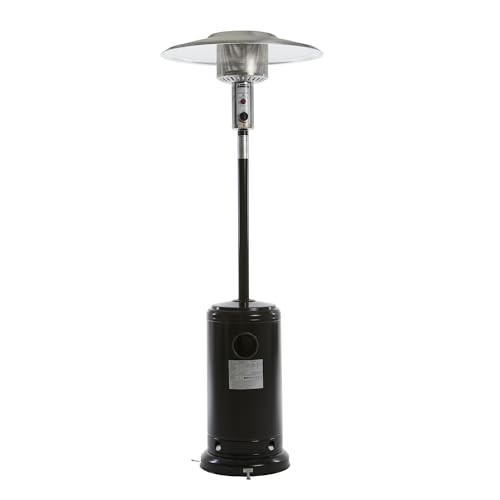Watch Out: What Patio Heating Systems Is Taking Over And How To Stop It
Patio Heating Systems: A Comprehensive Guide
As outdoor living areas evolve into extensions of our homes, creating a comfortable and welcoming atmosphere is critical. Among the most efficient methods to attain this convenience is by executing patio heating systems. These systems permit families and pals to enjoy their outdoor spaces year-round, no matter the chill of the night air. Patio Heating Equipment will explore numerous patio heating systems readily available, their functions, benefits, and important factors to consider for selecting the best one.
Kinds Of Patio Heating Systems
Patio heating unit been available in various forms, each with its own distinct qualities. Below are some of the most common types:
Type
Description
Pros
Cons
Electric Patio Heaters
These heaters run utilizing electrical energy and be available in wall-mounted, portable, and freestanding models.
Easy to install and utilize; instant heat; safe; low maintenance
Restricted heat range; might increase electrical power expense
Gas Patio Heaters
Usually powered by propane or natural gas, gas patio heaters provide significant heat output and can cover large areas.
High heat output; can last longer than electric designs; ideal for huge events
Requires gas supply; can be less portable; safety issues with gas leaks
Infrared Heaters
Infrared heaters discharge thermal radiation that directly warms objects and individuals instead of the surrounding air.
Efficient; immediate heat; minimal heat loss; environmentally friendly options available
Restricted location of result; preliminary expense might be high
Fire Pits
Typically made of stone or metal, fire pits offer warmth and ambiance, producing a comfortable atmosphere.
Natural ambiance; versatile (cooking option); collect around for social interactions
Safety risks with open flame; require wood or propane supply
Patio Umbrellas with Heaters
These are umbrellas fitted with integrated heating elements, ideal for shaded areas.
Convenient; combines shade and heating; portable
Less reliable in windy conditions; restricted location; can be expensive
Key Features to Consider
When selecting a patio heating system, it is important to evaluate numerous features based on personal preferences, budget, and outdoor space requirements. Here are some elements to consider:
Heating Capacity: Measured in BTUs (British Thermal Units), this identifies the heat output of the heater. Select visit the next post with adequate BTUs for your outdoor size.
Fuel Type: Decide in between electrical, gas, or wood-burning options based upon convenience, accessibility, and effectiveness.
Mobility: If mobility is essential, look for light-weight or wheeled models for simple transportation.
Upkeep: Consider the upkeep needed for each type. Suggested Looking at need less upkeep than gas or wood options.
Security Features: Look for systems with security cut-offs, protective screens, and materials that can hold up against outdoor conditions.
Benefits of Patio Heating Systems
Patio heating unit offer a number of benefits, enabling homeowners to make the most of using their outdoor living areas. Some benefits include:
- Extended Outdoor Use: Heaters enable more time invested outside, even during cooler seasons.
- Increased Comfort: Provide a warm and inviting environment for events, celebrations, or peaceful nights.
- Improved Aesthetics: Many heater designs include a stylish touch to outdoor decoration.
- Increased Property Value: Homes with fully equipped outdoor spaces may draw in higher value and interest possible purchasers.
- Versatile Options: With various design and styles available, there is a heating service for every single type of outdoor setting.
FAQs About Patio Heating Systems
1. How much does it cost to run a patio heater?
- Electric Models: This depends on the local electrical energy rates and use time. Usually, running an electric heater can cost in between ₤ 0.10 to ₤ 0.50 per hour.
- Gas Models: Propane costs differ, but a 20-pound tank generally lasts about 8-10 hours, costing around ₤ 20-₤ 30 to fill.
2. Are patio heaters safe to utilize?
Most modern patio heaters are designed with safety features. However, it's necessary to follow security protocols, such as adhering to clearances from flammable things, using on stable surfaces, and ensuring correct ventilation for gas designs.
3. Do patio heaters operate in windy conditions?
Many patio heaters can supply warmth in light winds, however strong gusts can reduce their effectiveness and safety. For high-wind locations, consider more stable designs or use wind shields.
4. Can I utilize a patio heater inside?
Using outdoor heaters inside your home is not recommended due to carbon monoxide risks, particularly with gas heaters. Constantly validate your heater's desired usage standards before installation.
5. How do I maintain my patio heating unit?
Regular maintenance is crucial to guarantee durability and efficiency:
- For electrical heaters, inspect and clean the heating aspect frequently.
- Gas heaters should have their gas lines checked for leaks and filters cleaned up.
- Fire pits need to be cleaned after use and looked for any residue or ash buildup.
Patio heating unit play an essential function in changing outdoor areas into comfy and welcoming environments. With a range of options, each with unique benefits and features, house owners can choose the best system based on their requirements, choices, and specific outdoor conditions. By investing in a dependable patio heater, one can optimize pleasure of their outdoor space throughout the year. Whether hosting summertime barbecues or cozying up on cool evenings, a warmed patio invites togetherness, relaxation, and pleasure, making it a valuable addition to any home.
